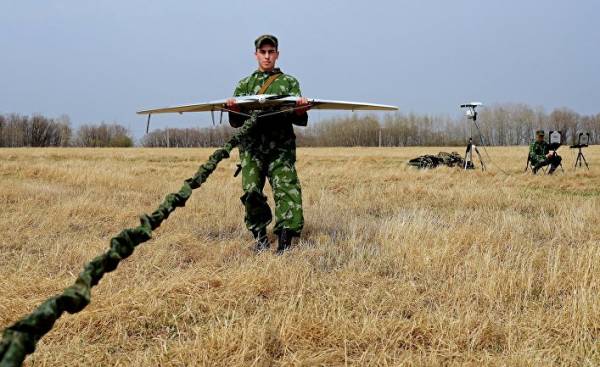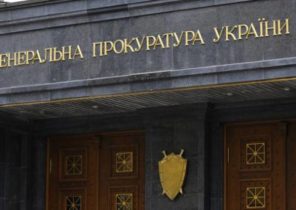
The white house and all of official Washington is preoccupied with investigations of Russian interference in presidential elections in 2016. Meanwhile, the Pentagon has serious concerns with the growth of military power of Russia.
Military experts around the world will closely monitor the progress of large-scale military exercises, which will be held in Belarus in mid-September and for participation in which Russia is planning to throw nearly 100 thousand troops and the latest military equipment.
According to analysts, these exercises, dubbed “Zapad-2017”, will be the most ambitious and complex exercises combat forces since the end of the cold war.
The scale of the exercises “West-2017” alarming U.S. allies in Europe. This military event is of great interest to the Pentagon because it should shed light on the tactics and technologies that transform the Russian army into a strong enemy.
Last week the Chairman of the joint chiefs of staff General Joseph Dunford (Joseph Dunford) called Russia “the most capable public entity, with which we have to deal with.”
Given that Russia is one of the many threats that worry the Pentagon, she is undoubtedly the “most efficient,” says Dunford.
The needs of the army Russia spends much less money than the United States. Its advantage lies in the fact that it uses its power in an untraditional way. “They conduct cyberspace operations, and other non-standard operations, he explained. We should be able to compete with them.”
General Raymond Thomas (Raymond Thomas), chief of the special forces of the Ministry of defense, noted that these military exercises in Belarus greatly alarmed Eastern European countries that consider them to be only a pretext in order to move Russian troops closer to the borders of NATO. “What is most troubling is that they can stay there,” said Thomas at a security forum in aspen, which was held last week.
“And it’s not paranoia,” he said. Eastern Europeans fear that this is just “an excuse to get closer and take a comfortable position.” They fear that Russia may try to “take away part of the territories of their countries, as it did in the East of Ukraine and in the Crimea.”
Military experts believe that in the course of these exercises, Russia can demonstrate new drones and new tactics for their use. This became a sore point for the us army and to NATO after they were caught by surprise innovative use of Russian drones as instruments of electronic warfare in Syria and Ukraine. It opened their eyes to how the enemies of the United States can take relatively simple technologies and turn them into powerful weapons of war.
Russian unmanned systems announced himself about six years ago. Russia believes that with their help she will be able to reduce the gap with the NATO forces, which have a qualitative technological advantage. The successful use of drones by the Russian military to suppress the signals of communication systems and GPS satellites have surprised the West, forcing the us military to develop similar technologies and techniques to counter electronic attacks Russia.
Non-profit analytical centre CNA in Arlington has been studying and analyzing the huge amount of data relating to the military potential of Russia. These studies are funded by the US Navy and several agencies of the Ministry of Defence.
Analyst CNA bendett of Samuel (Samuel Bendett) believes that soon Russia will demonstrate significant progress in the field of drone technology.
According to Bendetta, during the exercises “West-2017,” the Russian military will show you how they use drones for surveillance and intelligence gathering, and tactics of electronic warfare. They will also use drones to detect enemy forces. “Most likely, we will not see any new drones, but we can see how Russia effectively uses the tools that are at its disposal, namely, small drones equipped with small striking tools and small pieces of artillery”.
Russia has carefully studied how the militants of the Islamic state (a terrorist organization banned in Russia — approx. ed.) used cheap commercial drones as delivery systems for weapons. According to Bendetta on recent promotional video shot on Russian test ranges, you can see how small drones dropping bombs on targets. “We can also be seen how Russia fulfills its promises to begin to send on quests from groups of drones, how unmanned ground equipment and small drones conduct operations to support the ground forces.”
According to Bendetta, like ISIS, Russia sees in the simple commercial technology “factor of increasing the combat readiness”. He added that the number of drones, which has Russia increased from 200 in 2011 to over two thousand today. Most of them are drones small size.
Bendett stressed that the United States is far ahead of Russia in the field of drone technology.
“The Russian army is only beginning to develop policies and to get public support, which operated in the United States for several decades. We are talking about military labs, cooperation with the private sector in the formulation of needs and requirements, well-funded research, mechanisms of development and other factors that ensure rapid development and testing of new systems.”
However, the race in unmanned systems become more and more tense now that Russia together with China and Iran continue to make significant progress in a relatively short time. According to Bendetta, ground robotics is an area in which Russia made the most progress in comparison with America.
Over the last five or six years, according to him, Russia has created a very impressive combat robots that may eventually replace the traditional armored vehicles and tanks. The idea is to simultaneously use ground robots and small drones.
CNA analyst Michael Coffman (Michael Kofman) argues that Russia continues to make progress in technology, despite the reduction in funding caused by the fall in oil prices. This year Russia’s military budget has been reduced by 8%, and in the next three years it will decrease by another 6%.
Russia’s military budget is about 3 trillion rubles, which is around $ 50 billion. However, Coffman cautions that attempts to translate this amount into dollars can, in a sense, confusing. Russia buys nothing for the American dollars, so, according to him, these allocations are in accordance with the exchange rate excessively downplay the size of the Russian military budget.
In rubles Russia has a very significant purchasing power, says Kofman, so 3 trillion rubles is quite a lot. “I believe that Russia’s military budget will increase after 2019, and part of the current cuts may be revised depending on fluctuations in oil prices”.






